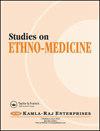司汤达(佛罗伦萨)综合征是一种未分类的疾病
Q2 Social Sciences
引用次数: 1
摘要
本文的第一个目的是从根本上探讨人与艺术的关系。在这篇论文中,将回顾与司汤达综合症有关的文献,以及与艺术心理学有关的文献。在社会上,做艺术的必要性被广泛定义为个人自我揭露的一种形式。根据科学家的定义,艺术是自我实现的艺术。本文讨论的另一个概念是司汤达(佛罗伦萨)综合征。它被称为城市综合症。司汤达综合征,也称为佛罗伦萨综合征,描述了一种折磨在意大利佛罗伦萨观看艺术作品的人的身体疾病。症状包括头晕、心悸、幻觉、定向障碍、丧失身份和身体倦怠。这些临床特征表现在遇到丰富的意大利文化和历史重要人物的患者身上。通讯地址:布尔萨工业大学Asli Yayak,152 Evler Mah。Egitim Cad。电话:00905394219688,传真:00902243003830,电子邮件:asli.yayak@btu.edu.tr引言在过去的几年里,由于接触到艺术和历史杰作,游客们出现了一系列心理症状。这些都被称为城市综合症。它们不同于长期的心理或精神障碍。城市综合征是一种短期疾病,仅在到访城市中可见。巴黎综合征、耶路撒冷综合征和司汤达(佛罗伦萨)综合征是城市综合征中最广为人知的(Halim 2009)。司汤达综合征基本上是一种身心障碍,当人们听到或看到一件艺术品时,个体会经历某些反应。这些反应包括心悸、头晕,甚至产生幻觉(Pinar 2014)。司汤达综合征最早见于圣克罗齐大教堂。这种综合征的名字是由玛丽·亨利·拜尔于1817年在意大利创造的,在文学中他的笔名是司汤达。根据每年进行的实验,在佛罗伦萨之旅中,观察到大脑的相同区域表现出强烈的情绪(Innocenti 2014)。尽管进行了这些实验,但《精神障碍诊断与统计手册》(DSM)并未将司汤达综合征定义为一种特定的精神疾病,但相比之下,它被意大利最重要的词典之一Zingarelli收录(Hager 2016)。根据Magherini的研究,司汤达综合征的症状尤其见于北欧人;不出所料,受影响最小的是意大利人(因为每条街道都像一个美术馆)和日本人(因为他们的组织能力)。还有一些具体的作品记录了这些效果。根据数据,米开朗基罗的《大卫》、卡拉瓦乔的《巴克斯》和波提切利的《维纳斯》是记录该综合征症状最多的作品(哈格2016)。司汤达综合征没有具体的治疗方法。它尤其见于那些喜欢艺术、情绪更敏感的人。司汤达在日记中这样解释他的感受:“我被困在这种荣耀中。我的生命似乎在我眼前闪现。如此之多,以至于我走路时害怕绊倒和翻滚”(Amancio 2005)。这些症状不仅出现在佛罗伦萨,而且这种综合征之所以如此命名,是因为它最初在那里被描述。这种综合征也被称为“艺术中毒”,因为它发生在看到非凡而宏伟的艺术作品时(Pinar 2014)。司汤达综合征的症状与巴黎综合征的相反。在Paris综合征中,有一种由没有达到的高期望引起的抑郁症,而在Stendhal综合征中有percepEthno Med的损失,13(4):190-197(2019)DOI:10.31901/2456772.2019/13.04.594©Kamla Raj 2019印刷:ISSN 0973-5070在线:ISSN 2456-6772 Stendhal综合征191 Ethno Med,13(4):190-197(2019),由于所观察到的作品的宏伟而失去意识(英诺琴蒂,2014)。本文章由计算机程序翻译,如有差异,请以英文原文为准。
Stendhal (Florence) Syndrome as an Unclassified Disorder
The first aim of this paper is to discuss human-art relations basically. In this paper, literature related to Stendhal syndrome as pertaining to art psychology will be reviewed and information on the subject will be compiled. The necessity of doing art is widely defined in society as a form of self-disclosure by an individual. The definition of art according to scientists is art as self-actualization. The other discussed concept in this paper is Stendhal (Florence) syndrome. It’s known as a city syndrome. Stendhal syndrome, also known as Florence syndrome, describes a physical disease that afflicts those who behold works of art in Florence, Italy. The symptoms are dizziness, palpitations, hallucinations, orientation disorder, loss of identity and physical burnout.These clinical features manifest in patients who encounter rich Italian culture and historically important characters. Address for correspondence: Asli Yayak, Bursa Technical University, 152 Evler Mah. Egitim Cad. No: 80, Yildirim-Bursa, Turkey Telephone: 00905394219688, Fax: 00902243003830, E-mail: asli.yayak@btu.edu.tr INTRODUCTION Over the last few years, a cluster of psychological symptoms has appeared among tourists due to exposure to artistic and historical masterpieces. These are known as city syndromes. They differ from long-term psychological or psychiatric disorders. City syndromes are short-term disorders and are seen only in the visited cities. Paris syndrome, Jerusalem syndrome and Stendhal (Florence) syndrome are the most widely known among city syndromes (Halim 2009). Stendhal syndrome is basically a psychosomatic disorder in which an individual experiences certain reactions when a work of art that is listened to or seen. These reactions include heart palpitations, dizziness, and even hallucinations (Pinar 2014). Stendhal syndrome was first seen in the Basilica of Santa Croce. The name of this syndrome was coined by Marie-Henri Beyle, known in literature by his pen name as Stendhal, in Italy in 1817. According to experiments conducted annually, the same regions of the brain were observed to act with intense emotion during a trip to Florence (Innocenti 2014). Despite these experiments, Stendhal syndrome is not defined in the The Diagnostic and Statistical Manual of Mental Disorders (DSM) as a specific psychiatric illness, but in contrast, it is included in Zingarelli, which is one of Italy’s most important dictionaries (Hager 2016). According to Magherini’s research, symptoms of Stendhal syndrome are seen especially in Northern Europeans; the least affected people are, predictably, Italians (because every street is like an art gallery) and the Japanese (because of their organizing abilities). There are also specific works whereby the effects have been recorded. According to the data, Michelangelo’s David, Caravaggio’s Bacchus and Botticelli’s Venus are works where symptoms of the syndrome have most been recorded (Hager 2016). Stendhal syndrome does not have a specific treatment method. It is especially seen among individuals who are fond of art and are more emotionally sensitive. Stendhal explained his feelings in his diary as follows: “I was trapped in this glory. My life seemed to flash before my eyes. So much so that I was afraid to stumble and roll as I walked” (Amancio 2005). These symptoms are not only seen in Florence, but the syndrome is so named because it was first described there. This syndrome is also referred to as “art poisoning” because it occurs when exceptional and grandiose works of art are beheld (Pinar 2014). The symptoms of Stendhal syndrome are the opposite of those observed in Paris syndrome. In Paris syndrome, there is a depression caused by high expectations that are not met, whereas in Stendhal syndrome there is a loss of percepEthno Med, 13(4): 190-197 (2019) DOI: 10.31901/24566772.2019/13.04.594 © Kamla-Raj 2019 PRINT: ISSN 0973-5070 ONLINE: ISSN 2456-6772 STENDHAL SYNDROME 191 Ethno Med, 13(4): 190-197 (2019) tion and a loss of consciousness due to the grandeur of the works observed (Innocenti 2014).
求助全文
通过发布文献求助,成功后即可免费获取论文全文。
去求助
来源期刊

Studies on Ethno-Medicine
Social Sciences-Cultural Studies
CiteScore
0.50
自引率
0.00%
发文量
13
期刊介绍:
Studies on Ethno-Medicine is a peer reviewed, internationally circulated journal. It publishes reports of original research, theoretical articles, timely reviews, brief communications, book reviews and other publications in the interdisciplinary field of ethno-medicine. The journal serves as a forum for physical, social and life scientists as well as for health professionals. The transdisciplinary areas covered by this journal include, but are not limited to, Physical Sciences, Anthropology, Sociology, Geography, Life Sciences, Environmental Sciences, Botany, Agriculture, Home Science, Zoology, Genetics, Biology, Medical Sciences, Public Health, Demography and Epidemiology. The journal publishes basic, applied and methodologically oriented research from all such areas. The journal is committed to prompt review, and priority publication is given to manuscripts with novel or timely findings, and to manuscript of unusual interest. Further, the manuscripts are categorised under three types, namely - Regular articles, Short Communications and Reviews. The researchers are invited to submit original papers in English (papers published elsewhere or under consideration elsewhere shall not be considered).
 求助内容:
求助内容: 应助结果提醒方式:
应助结果提醒方式:


